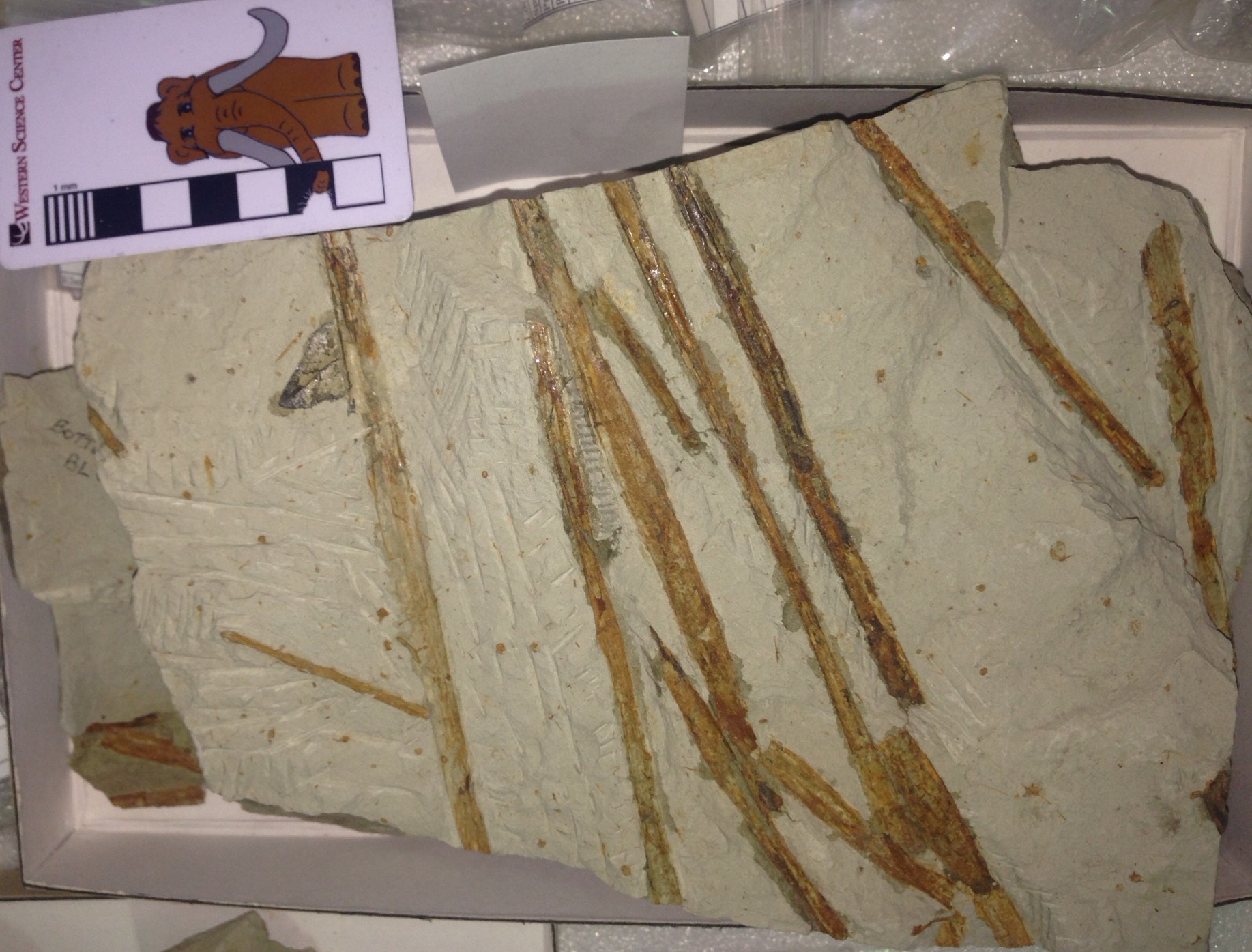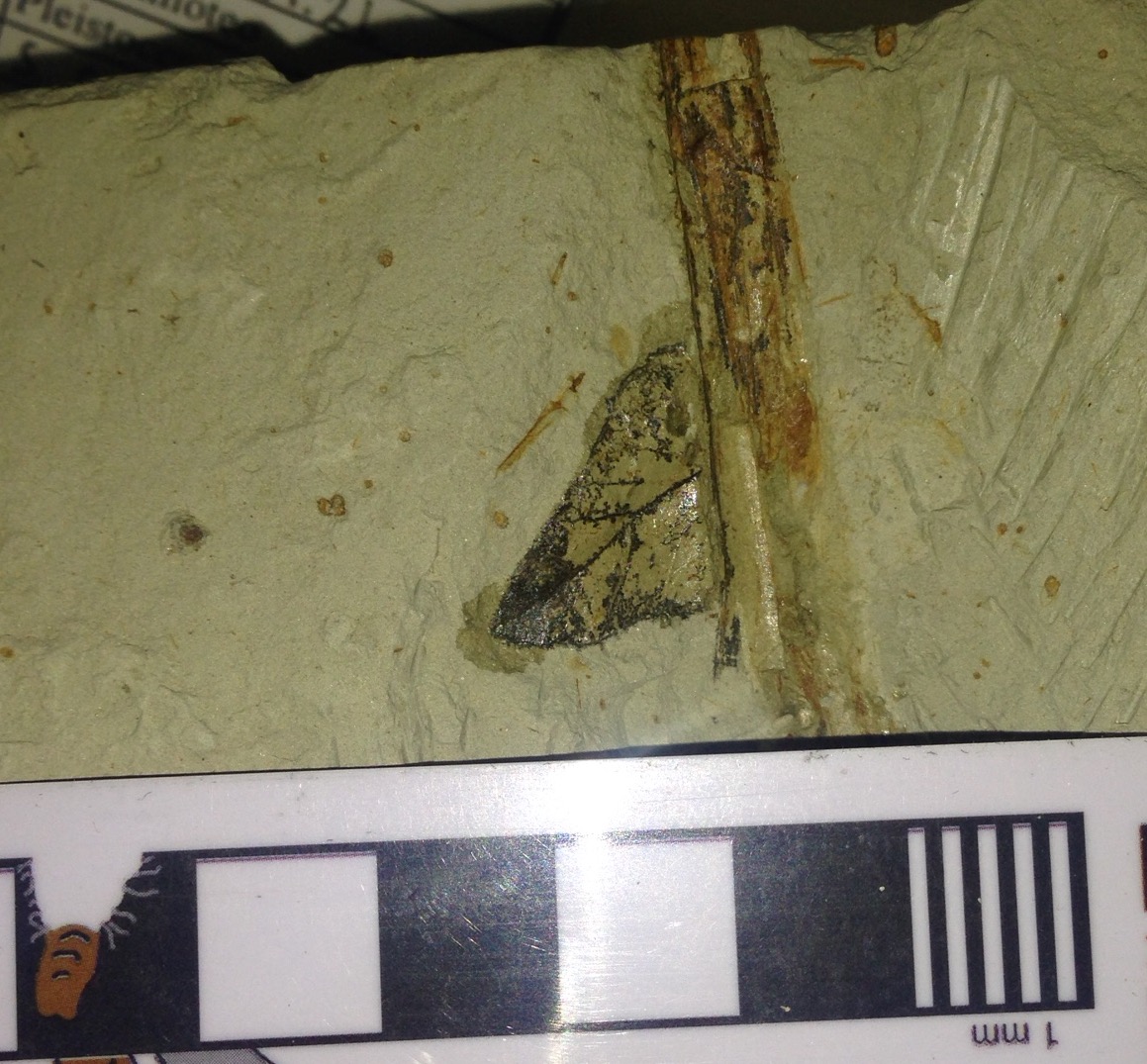 Fossil plants often don't get the attention they deserve, but besides being interesting organisms in their on right, they are in many ways far better indicators of past environmental conditions than are animals.Excavation of the Early- to Middle- Pleistocene deposits at the Southern California Edison El Casco Substation in San Timoteo Canyon produced numerous fossil plants, including quite a few examples of bur-reed (Sparganium sp.) such as the examples shown above. Sparganium is an aquatic plant that grows in marshes and standing water, and while several species still live in California we don't see them in areas as dry as San Timoteo Canyon is today. Several other marsh plants, including horsetails, were also found in these deposits.As I was photographing this specimen, I noticed another plant peaking out from under the bur-reed:
Fossil plants often don't get the attention they deserve, but besides being interesting organisms in their on right, they are in many ways far better indicators of past environmental conditions than are animals.Excavation of the Early- to Middle- Pleistocene deposits at the Southern California Edison El Casco Substation in San Timoteo Canyon produced numerous fossil plants, including quite a few examples of bur-reed (Sparganium sp.) such as the examples shown above. Sparganium is an aquatic plant that grows in marshes and standing water, and while several species still live in California we don't see them in areas as dry as San Timoteo Canyon is today. Several other marsh plants, including horsetails, were also found in these deposits.As I was photographing this specimen, I noticed another plant peaking out from under the bur-reed: I'm pretty sure this is a birch leaf (Betula sp.), which is known from other specimens in the El Casco collection. Betula doesn't require as much water as Sparganium, but it's still not tolerant of arid conditions. However, today Betula is not found naturally anywhere in southern California, and in fact is found nowhere in the southern United States (even in humid areas) except at high elevations. It seems that birch are not tolerant of frequent high temperatures, and thrive in the cooler conditions found today at higher latitudes and altitudes. The presence of birch and abundant water plants such as Sparganium in the El Casco collection suggested wetter and cooler conditions at San Timoteo Canyon during the Early Pleistocene relative to what we see there today.
I'm pretty sure this is a birch leaf (Betula sp.), which is known from other specimens in the El Casco collection. Betula doesn't require as much water as Sparganium, but it's still not tolerant of arid conditions. However, today Betula is not found naturally anywhere in southern California, and in fact is found nowhere in the southern United States (even in humid areas) except at high elevations. It seems that birch are not tolerant of frequent high temperatures, and thrive in the cooler conditions found today at higher latitudes and altitudes. The presence of birch and abundant water plants such as Sparganium in the El Casco collection suggested wetter and cooler conditions at San Timoteo Canyon during the Early Pleistocene relative to what we see there today.
